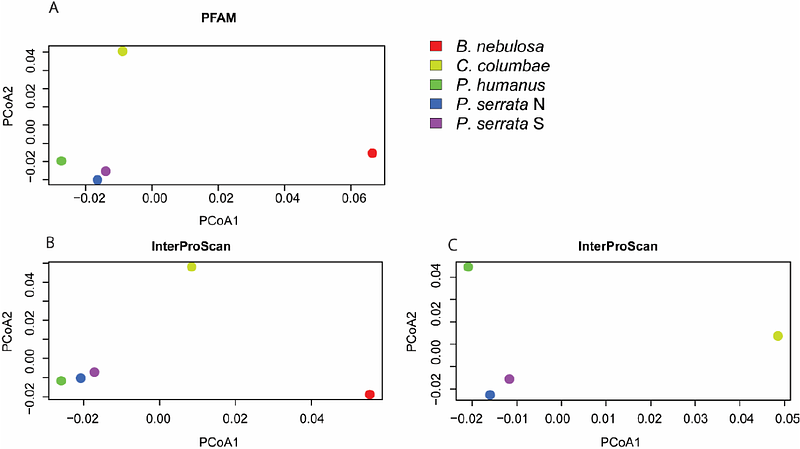Highly resolved genomes as a tool for studying speciation history of two closely related louse lineages with different host specificities.

Highly resolved genomes as a tool for studying speciation history of two closely related louse lineages with different host specificities.
Martinu, J.; Tarabai, H.; Stefka, J.; Hypsa, V.
AbstractSucking lice of the suborder Anoplura are permanent ectoparasites with specific lifestyle and highly derived features. Currently, genomic data are only available for a single species, the human louse Pediculus humanus. In this study we present genomes of two distinct lineages, with different host spectra, of a rodent louse Polyplax serrata. Genomes of these ecologically different lineages are closely similar in gene content, display a high level of synteny, but they also differ by few translocations and single inversion. Compared to P. humanus, the two P. serrata genomes are noticeably larger (139 Mbp vs. 111 Mbp) and encode a higher number of genes. Similar to P. humanus, they are significantly reduced in sensory-related categories such as vision and olfaction. Utilizing a genome-wide set of genes, we perform phylogenetic reconstruction and evolutionary dating of the P. serrata lineages. Obtained estimates reveal their relatively deep origin (approx. 6.5 Mya), comparable to the time of split between the human and chimpanzee lice Pediculus humanus and P. schaeffi. This dating supports the view that the P. serrata lineages are likely to represent two cryptic species with different host spectra. Historical demographies of the two lineages show glaciation-related population size (Ne) reduction, but recent restoration of Ne was seen only in the less host specific lineage. Together with the louse genomes, we analyze genomes of their bacterial symbiont Legionella polyplacis, and evaluate their potential complementarity in synthesis of amino acids and B vitamins. We show that both systems, Polyplax/Legionella and Pediculus/Riesia, display almost identical patterns, with symbionts involved in synthesis of B vitamins but not amino acids.